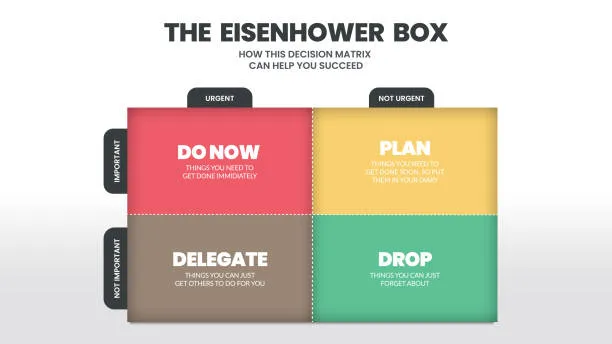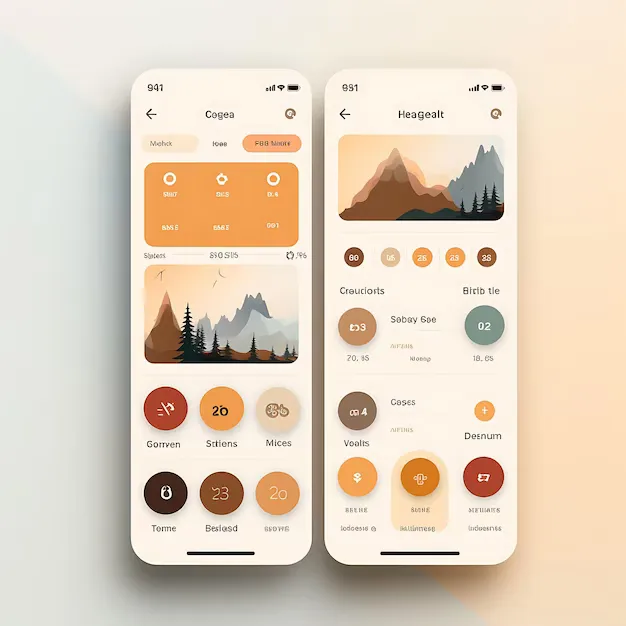In today’s fast-paced world, we’re often pulled in a million different directions. It can feel like we’re constantly trying to keep a dozen plates spinning in the air, and if we drop even one, everything comes crashing down. But fear not!
With the right strategies and mindset, it’s possible to manage multiple priorities without burning yourself out.
Let’s dive into some tried-and-true methods that’ll help you stay on top of your game.
The Priorities
Before we jump into the nitty-gritty of managing multiple priorities, it’s crucial to understand what we’re dealing with. Priorities aren’t just tasks on a to-do list; they’re the big-picture items that drive our personal and professional lives forward. Think of them as the main acts in your life’s circus - the ones that really matter.
Once you’ve identified your true priorities, you can start to align your actions with your goals. It’s like setting up dominos - when you knock down the first one (your top priority), the rest start to fall into place.
🎯 Priority Insight
Remember that time you spent hours answering emails while your big project deadline loomed? Yeah, we’ve all been there. It’s easy to get caught up in the urgent and forget about the important.
The Eisenhower Matrix

So, how do we sort this out? Enter the Eisenhower Matrix. This nifty tool helps you categorize tasks based on their urgency and importance. Picture a grid with four quadrants:
| The Eisenhower Matrix |
|---|
| 1. Urgent and Important: These are your “do it now” tasks. |
| 2. Important but Not Urgent: Your “plan for these” tasks. |
| 3. Urgent but Not Important: The “delegate if possible” tasks. |
| 4. Neither Urgent nor Important: The “do you really need to do these?” tasks. |
Strategies for Managing Multiple Priorities
Now that we’ve got our priorities straight, it’s time to talk about how to juggle them without dropping the ball. It’s all about balance, folks. Think of it like a tightrope walker in a circus - lean too far in one direction, and you’ll topple over. The key is to find your center and maintain it.
One of the most effective strategies I’ve found is time-blocking. It’s exactly what it sounds like - you block out specific times for specific tasks. But here’s the twist: instead of trying to tackle everything at once, you focus on one priority at a time. It’s like giving each of your circus acts its own spotlight moment.

⏰ Time Blocking Technique
Multitasking: The Productivity Myth
Speaking of switching gears, let’s talk about multitasking. We’ve all heard that it’s the key to productivity, right? Well, I hate to burst your bubble, but that’s a myth. Our brains aren’t wired to focus on multiple complex tasks simultaneously. When we try to multitask, we’re actually just switching rapidly between tasks, which can lead to decreased productivity and increased stress.
Instead of multitasking, try batching similar tasks together. It’s like sorting your laundry - you wouldn’t wash your whites with your darks, would you? The same principle applies to your tasks. Group similar activities together, and you’ll find that you can move through them more efficiently.
The Two-Minute Rule
Another strategy that’s been a game-changer for me is the “two-minute rule.” If a task takes less than two minutes to complete, do it immediately. It’s like picking up a piece of trash when you see it - it’s quicker to deal with it now than to come back to it later. This helps prevent small tasks from piling up and becoming overwhelming.
Pomodoro Clock
🐸 Eat That Frog!
Remember, managing multiple priorities isn’t about doing everything at once. It’s about making strategic decisions about what to focus on and when. It’s like being the ringmaster of your own circus - you decide which act goes on when, and you make sure the show runs smoothly.
The Mindset Shift
Now, I know what you’re thinking. “This all sounds great in theory, but what happens when life throws a curveball?” And you’re right to ask. No matter how well we plan, unexpected things will always pop up. That’s why the next crucial piece of the puzzle is developing a flexible and adaptable mindset.
Think of it like this: you’re not just a juggler in the circus, you’re also an acrobat. You need to be ready to bend and flex at a moment’s notice. This means being prepared to reassess and adjust your priorities as circumstances change.
Review and Reflection
One way to build this flexibility is through regular review and reflection. Set aside time each week to look back on what you’ve accomplished and what’s still on your plate. Ask yourself: Are my current priorities still aligned with my goals? Have new, more pressing matters arisen? This regular check-in helps you stay nimble and responsive to changes.
⚓ Flexibility vs. Consistency
Learning to Say No
Another key aspect of this mindset shift is learning to say no. I know, I know, it’s not easy. We often feel obligated to say yes to every request or opportunity that comes our way. But here’s the truth: saying yes to everything means saying no to your priorities. It’s like trying to add more acts to your circus when you’re already at full capacity - something’s gotta give.
Learning to say no doesn’t make you a negative person. On the contrary, it shows that you value your time and energy, and you’re committed to your priorities. It’s about setting boundaries and protecting your resources so you can give your best to what truly matters.
But what about when you do need to take on something new? That’s where the art of delegation comes in. You don’t have to be a one-person show. Look for opportunities to share the load, whether it’s at work or in your personal life. Delegating isn’t a sign of weakness; it’s a sign of smart resource management. It’s like having a team of acrobats instead of trying to perform every stunt yourself.
The Self-Care Factor
Now, we’ve talked about strategies for managing multiple priorities, but there’s one crucial element we haven’t touched on yet: self-care. It’s all too easy to get so caught up in the juggling act that we forget to take care of ourselves. But here’s the truth: if you burn out, all those carefully balanced priorities will come crashing down.
Think of self-care as the oil that keeps your juggling pins spinning smoothly. Without it, everything starts to grind and wear down. So, how do we make sure we’re taking care of ourselves while managing multiple priorities?
❤️ Self-Care Is Not Selfish
This might mean setting a firm “end of day” time and sticking to it, no matter what. It could mean taking regular breaks throughout the day to stretch, meditate, or just breathe deeply for a few minutes. Or it might mean carving out time for hobbies and activities that recharge your batteries. Whatever it is, make it non-negotiable. Your future self will thank you.
Sleep: Your Productivity Superpower
Sleep is another crucial aspect of self-care that often gets shortchanged when we’re busy. But skimping on sleep is like trying to run a marathon on an empty stomach - you might make it for a while, but eventually, you’re going to crash. Aim for 7-9 hours of sleep per night, and try to stick to a consistent sleep schedule. It’s amazing how much more manageable those multiple priorities seem when you’re well-rested.
Exercise: The Brain Booster
Exercise is another powerful tool in your self-care arsenal. I know, I know, when you’re juggling a million things, hitting the gym might seem like the last thing you have time for. But regular physical activity can actually boost your energy levels, improve your focus, and help you manage stress more effectively. It’s like giving your brain a tune-up - suddenly, everything runs more smoothly.
Don’t forget about nutrition, either. When we’re busy, it’s tempting to survive on coffee and whatever we can grab on the go. But fueling your body with nutritious food is crucial for maintaining the energy and focus you need to manage multiple priorities. Think of it like putting premium fuel in your car - you’ll get better performance and go further.
Social Connection: Your Support Network
Lastly, let’s talk about the importance of social connections. When we’re overwhelmed with priorities, it’s easy to become isolated. But maintaining relationships with friends and family is crucial for our mental and emotional wellbeing. These connections provide support, perspective, and often, a much-needed laugh. It’s like having a cheering section in your personal circus - they keep you motivated and remind you why you’re doing all this in the first place.
👥 Schedule Social Time
The Tech Toolbox
In this digital age, we’d be remiss not to talk about how technology can help us juggle multiple priorities. Now, I’m not saying that apps and gadgets are a magic solution - they’re tools, and like any tool, their effectiveness depends on how you use them. But when used wisely, technology can be like having a personal assistant in your pocket.

Task Management Apps
Let’s start with task management apps. These digital to-do lists can be game-changers when it comes to keeping track of multiple priorities. Apps like Todoist, Asana, or Trello allow you to organize tasks, set deadlines, and even collaborate with others. It’s like having a digital ringmaster, helping you keep all your circus acts in order.
One of the features I find most helpful in these apps is the ability to categorize tasks. You can set up different lists for different areas of your life - work, personal, side projects, etc. This visual separation can make it easier to switch between different priorities without feeling overwhelmed. It’s like having different rings in your circus, each with its own set of acts.
Calendar Apps: Your Digital Schedule Keeper
Calendar apps are another essential tool in the priority-juggling toolkit. But here’s a pro tip: don’t just use your digital calendar for appointments. Use it to schedule your priorities. Remember that time-blocking technique we talked about earlier? Your digital calendar is the perfect place to implement it. Color-code different types of tasks, set reminders, and even schedule in that all-important self-care time.
🔍 Focus Tools
Note-Taking Apps: Your Digital Memory
Note-taking apps like Evernote or OneNote can also be invaluable when juggling multiple priorities. They allow you to capture ideas, make lists, and even scan documents, all in one place. It’s like having a digital file cabinet that you can access from anywhere. No more scrambling to find that important note you scribbled on a napkin!
For those of us who struggle with time management, time-tracking apps can be eye-opening. Apps like RescueTime or Toggl track how you spend your time on your devices. It’s like having a personal timekeeper, showing you where your time is really going. You might be surprised to discover how much time you’re spending on low-priority tasks!
The key is to find a few tools that work for you and stick with them. Don’t get caught up in the endless cycle of trying every new productivity app that comes along. It’s like a circus performer who’s constantly changing their act - at some point, you need to pick your routine and perfect it.
✨ Final Thought
Stay up to date
Get notified when I publish something new, and unsubscribe at any time.